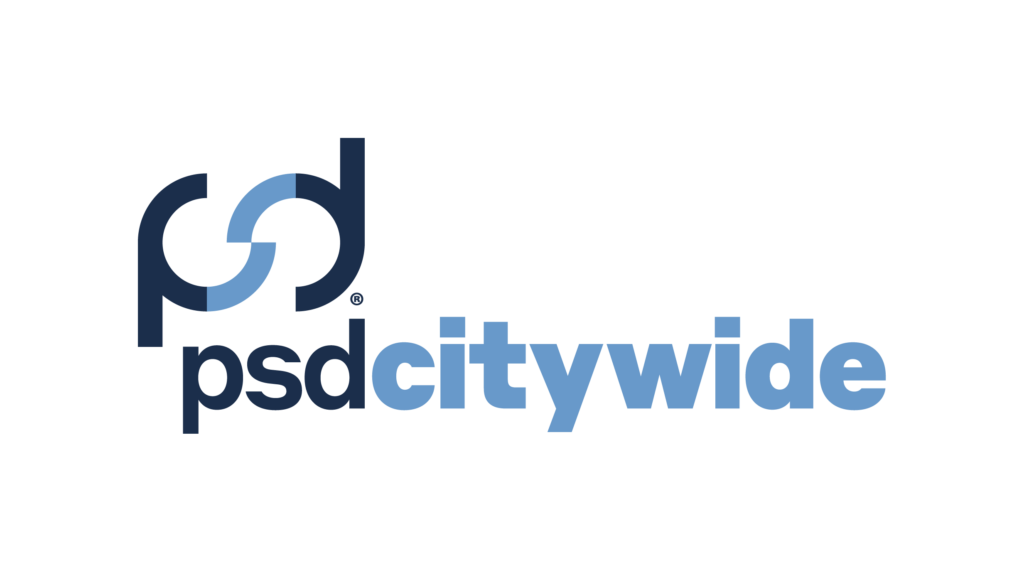Small communities in Canada may serve fewer citizens and own fewer assets, but they are still required to deliver the same range of necessary services to their residents. As they struggle with a smaller tax base and limited staff capacity and expertise they tend to fall behind on modern trends. Smaller communities are often less technologically advanced and have little time to adopt new practices. In conversation with Jodi MacArthur, the Treasurer at Huron-Kinloss, Ontario; Michael Beal, the Treasurer at Sackville, New Brunswick; and Chris Vanderheyden, Director, Asset Management Advisory at PSD Citywide, this article explores how small communities engage in asset management.
The Experts of Asset Management for Small Communities
Town of Sackville
Michael Beal has spent over 26 years working in municipal government, 22 of which have been spent as the Treasurer of the Town of Sackville. Throughout his time, he has experienced many changes as municipal governments in New Brunswick evolve. Asset management requirements are a recent development that has necessitated significant organizational change. A combination of his training and experience has allowed the Town of Sackville to grow and create budgets based on asset management practices that move the municipality forward in order to plan and prepare for the future.
The Town of Sackville, New Brunswick, has a population of 5,331. They are struggling with significant financial constraints, in part, as a result of their declining tax base. They have just begun building their asset management program with the support of the Municipal Asset Management Program (MAMP) grant from FCM. In 2016 they obtained Citywide Assets, enterprise asset management solutions and asset register. With Citywide Assets, they were able to build their asset database and develop their asset management strategy. In 2017, they adopted an Asset Management Policy and in 2018 they developed a comprehensive Asset Management Plan. They are still in the early stages of their asset management program as they continue to gather more information and build their asset database.
Township of Huron-Kinloss
Jodi MacArthur has been the Treasurer at the Township of Huron-Kinloss since 2001. While studying accounting at Georgian College, she completed two co-op terms with the Township of Huron-Kinloss leading to a full-time position after graduation. Jodi lead the community’s asset management program when it was launched in 2013. She has made significant efforts to support the adoption of new asset management software and approaches in order to support community resilience.
The Township of Huron-Kinloss is a small town in southwestern Ontario with a slowly increasing population of 7,069. The Township has been building their asset management program for several years. They obtained Citywide Assets and Capital Planning & Analysis software modules in 2013, at which point they began building their asset datasets. Through PSD Citywide’s asset management consulting program, the Township completed a state of maturity report, asset management policy, condition and data structure workshop, risk framework, lifecycle strategies, level of service framework, and financial strategy between 2017 and 2018. By the end of the process, Huron-Kinloss adopted a comprehensive Asset Management Plan. They are continuing to enhance their data while also training staff on asset management solutions. The software has risk management capabilities – user-controlled interface with unlimited risk classes, metrics, and weighting – that staff is still learning to use with the goal of applying to their data.
Asset Management Consultant
Chris Vanderheyden is a Director, Asset Management Advisory at PSD Citywide. Chris has his degree in GIS and Urban Planning from Fanshawe College and he has a certificate from the Institute of Asset Management. As Director, Asset Management Advisory, Chris is a leader in implementing PSD Citywide’s Asset Management Program initiatives through assessing needs and planning asset management programs and plans to meet these needs. Chris analyzes and leverages infrastructure data and information to assist asset performance management and levels of service. He also conducts infrastructure needs assessment and risk management lifecycle analysis and forecasting. Chris has worked with small communities across Canada to support the development of their respective asset management programs and is keenly aware of the unique struggles they encounter in this process.
Core Elements of Asset Management for Small Communities
There are core elements that define an organization’s asset management maturity and help measure the strength of its asset management program. They describe key competencies that are needed for sustainable service delivery. Aligned with industry standards, PSD Citywide has identified seven elements that can guide local governments as they build practical asset management programs.
Organization and People
This core element defines the local government’s existing organizational capacity and culture for asset management. The local government’s senior management team (SMT), elected officials, and staff should have a confident level of understanding of the benefits of asset management solutions and the components of a successful asset management program. SMT, elected officials, and staff should also demonstrate that asset management is a priority through dedicated resources and time commitments aimed at building their asset management program. The establishment of cross-departmental teams, committees, and routine communication dedicated to the community’s asset management practices is a necessary component to build organizational capacity.
Asset Information
Data is the foundation of evidence-based decision-making. This core element defines the completeness, management strategies, standards, and systems used for the local government’s asset data. The collection of comprehensive asset data must include historical cost, replacement cost, condition assessment data, and location among other data sets. The collection practice should also be standardized across departments and asset classes. Asset information should be efficiently stored and routinely reviewed and updated.
Strategy and Planning
Systematic asset management practices must align with the community’s existing strategies and plans. This core element defines the alignment between the local government’s asset management activities and corporate/strategic objectives. The community’s mission, vision, and key objectives defined in their corporate strategic plan, official plan, and similar documents must include asset management considerations. Furthermore, asset management-related documents adopted must align with the community’s guiding strategies and plans.
Asset Management Decision-Making
Asset management decision-making requires significant planning, monitoring, and review. This core element defines the local government’s approach to lifecycle activities including maintenance and rehabilitation, and project prioritization. Local governments should have a standardized and documented approach to determine operations and maintenance, project prioritization, and budget. Asset management-related documents should consistently guide decision-making and be reviewed and updated regularly.
Risk Management
Risk is a function of the likelihood that an asset will fail and the various consequences of that failure. This core element defines the local government’s identification, understanding, and management of economic, financial, social, and reputational risks. Local governments should have a comprehensive and documented understanding of risks associated with their assets. Risk matrices should inform capital project prioritization and lifecycle activities.
Levels of Service (LOS)
Levels of service indicate the quality, function, and capacity of an asset class. Defining levels of service for all asset classes is critical to building a strong and affordable asset management program. This core element defines the local government’s existing approach to the development and application of levels of service frameworks and their ongoing monitoring and review. The community should identify baseline levels of service and the associated costs. Baseline levels of service and stakeholder input should inform the development of key performance indicators that are documented and referenced to maintain the desired levels of service.
Financial Management Strategy
Asset management practices ultimately aim to create a more sustainable community by informing financial management. This core element defines the capacity of the local government’s current financial strategies to maintain a practical asset management program. Short- and long-term capital and operating/maintenance requirements for municipal assets must be informed by the community’s asset management, risk management, and levels of service strategies.
Case Studies
The core elements defined above provide a practical framework with which to explore the unique circumstances of developing an asset management program in a small town in Canada.
Organization and People
Small towns struggle with limited human resources. For this reason, asset management is often done off the side of someone’s desk. It is rare that smaller towns are able to have a staff member, committee, or specialist that is dedicated wholly to asset management. As a result, senior management and municipal staff likely have a basic understanding of asset management practices and very little time to prioritize the development of an asset management program. A lack of council support also contributes to a lack of organizational understanding and capacity to engage in asset management. In his experience, Chris Vanderheyden acknowledged that many councils in small communities are not aware of the benefits of asset management and they do not always support decision-making based on its principles.
In the case of Huron-Kinloss, PSD Citywide’s asset management consulting program helped them discover how they could realign some staff duties in order to have a staff member that is dedicated to asset management. The staff member has been working with the community for nearly two years to ensure that the asset management program remains a living document by supporting departmental cohesion and the information-gathering process. This was made possible, in part, because the Township’s Council has been incredibly supportive of asset management practices.
On the other hand, Sackville struggled with gaining buy-in from some staff and council members. By educating staff and Council on the benefits of asset management they were able to enhance their understanding. With a better understanding of the social and economic benefits of asset management practices, staff and Council began to prioritize asset management which allowed them to acquire the help of PSD Citywide’s consulting team in 2017.
Asset Information
According to Chris, data is the single biggest roadblock to preventing small communities from moving forward in their asset management practices. Both Jodi MacArthur and Michael Beal agreed that this was the case for their communities. Most of the small communities that Chris works with require a major overhaul in this department. The information from each department needs to be consolidated, updated, and be made more accurate. Moreover, most small communities have insufficient software to house the data and make use of it.
Jodi and Michael each mentioned that their data gaps were largely a result of limited staff time. Gathering data is a time-consuming process. Through a data gap analysis, Huron-Kinloss and Sackville were able to identify where data was missing, and which datasets required prioritization. Huron-Kinloss was able to build their database over several years. Since human resources have always been the biggest constraint to gathering accurate and up-to-date data, they have been taking their time to properly build their database and remove any gaps.
When they began building their asset management program, Sackville needed to build their data from the ground up. They were missing accurate historical costs and replacement costs for the majority of their assets. Through the asset management consulting program, they were able to discover their gaps and their capacity to fill those gaps in a reasonable timeline. Michael stated that one of the most important changes they have made is to their data-gathering processes. With Citywide Assets and the data templates provided by PSD Citywide, municipal staff are able to gather the right data for each asset going forward, ensuring that the next generation of municipal staff has comprehensive information and processes in place.
Strategy and Planning
There are a number of publicly available guides and frameworks for corporate asset management. However, these guides cannot take into consideration the community’s unique characteristics. Each community has different financial resources, human resource capacities and expertise, geography, and asset portfolio. Without taking into consideration these individual qualities, strategies derived from ready-made frameworks are often unachievable for small communities.
With a tailored asset management policy and plan in place, Huron-Kinloss and Sackville were able to develop a realistic asset management strategy. Unlike larger communities, their asset management programs will be growing at a slower pace which will ensure that the information gathered is comprehensive and accurate. With achievable timelines and goals, it is easier to gain council support and continue to breathe life into the asset management plan.
Asset Management Decision Making
When working with small communities, the main goal is to make infrastructure decisions less reactive. With limited time and money, small communities have subsisted on a retroactive approach: fix it when it breaks. With an asset management program, communities of any size can begin to make data driven decisions and models. Jodi found that since beginning their asset management program they have already experienced fewer surprises and they are now more prepared to deal with unexpected asset failures. By engaging in lifecycle activities, they have been able to create efficiencies by making assets last as long as they can without compromising quality of life and safety for their citizens.
Sackville has only just begun their asset management program, yet Michael has noticed that their municipal practices have already become less reactive. Municipal staff are engaging in lifecycle activities that have been able to limit the number of unexpected asset failures. However, he has found that it is still difficult to encourage Council to make decisions based on their asset management program instead of based on resident pressures. He hopes that as they build a more robust program with accurate data and information, they will be able to better inform Council.
Risk Management
Due to limited resources, smaller communities often have to opt for ready-made risk models. These can be a great way for communities to learn the key elements of risk management but will not take into consideration unique risks to the community. A triple bottom line approach – which considers social, economic, and environmental impacts – does not fully consider operational impacts, climatic impacts, strategic impacts, health and safety impacts, and many others.
Jodi remarked that they have a diverse community with a small urban area, agricultural areas, cottage country, and a lot of lakefront. Their risk management program needed to consider these details in order to properly understand the complex risks associated with an economically and socially diverse community.
Levels of Service
In his work with small communities across Canada, Chris discovered that many have not documented a baseline for their levels of service. Without a proper understanding of the municipalities’ baseline levels of service, there is a risk of “putting the cart before the horse.” One cannot properly determine key performance indicators and service delivery goals without a basic understanding of what is achievable for the organization.
Chris found that many small communities simply believe that they do not have access to the information needed to inform the development of key performance indicators. However, by tracking service requests for utilities, flooding complaints, work order management, and accounting information the community can often determine their baseline levels of service. From there, they are able to determine their desired levels of service based on what is achievable.
Financial Management Strategy
Organizations are able to develop financial strategies based on asset management by first identifying asset condition, lifecycle frameworks, risks, and levels of service. Through the asset management process, most small communities in Canada discover a sizeable capital budget deficit. Prior to the development of their asset management program, Jodi remarked that budgets were based on the assumed costs for maintenance and replacement. However, after completing the asset management consulting program, they were able to build the information into their operating budget; as a result, they found that there was much less strain on the capital budget.
Michael found that they are already improving their financial planning processes with the information from their asset management plan. The capital budget proposed to Council was informed by their asset management plan and they were able to extensively explain the decision-making process to gain council support for their budget proposal.
Conclusion
Constrained budgets and human resources make asset management practices even more important for small communities. Efficiencies can be found by building a risk framework, lifecycle strategies, and a levels of service framework into the community’s financial strategies. However, it costs time and money to develop these frameworks and strategies. For that reason, small communities often depend on consulting engagements and software tools to move them forward. In the case of Huron-Kinloss and Sackville, PSD Citywide’s team acted as an extension of the organization. While these communities worked with PSD Citywide, staff had people to depend on for asset management guidance and expertise. Once the asset management program was in place, municipal staff were provided with the frameworks and software tools needed to maintain the program and ensure the sustainable delivery of municipal services.



